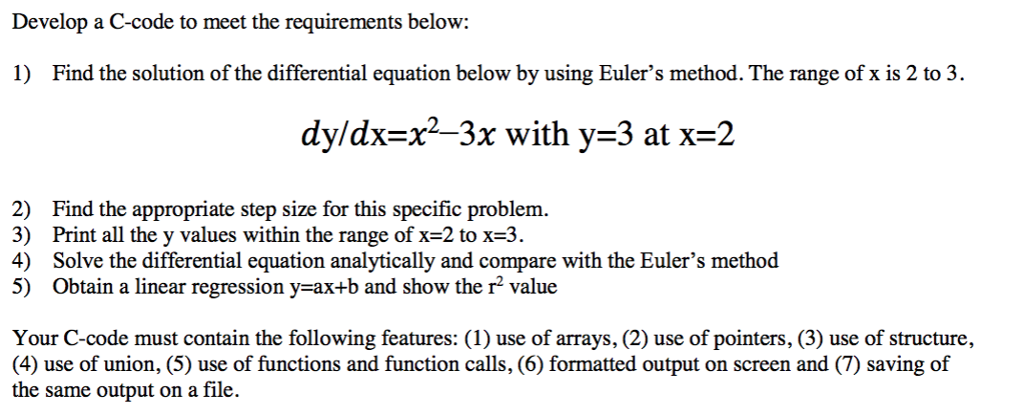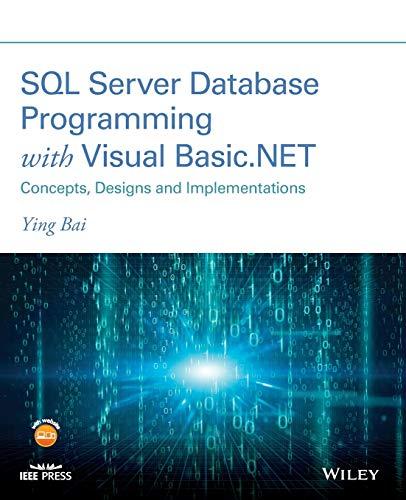Question
PLEASE HELP ME revise this code to include a struct, pointer and union. I have the code i wrote PLEASE use the code i wrote
PLEASE HELP ME revise this code to include a struct, pointer and union. I have the code i wrote PLEASE use the code i wrote also PLEASE make sure i coded the math portion correctly. This is the prompt
 This is my code so far
This is my code so far
#include
#include
double sum(double [], double [], int n);
double r(double [], double [], int , double , double );
float func(float ,float );
float euler(float ,float ,float ,int );
int main(){
double x[]={2,3};
double y[]={3};
double one[]={1,1};
float xn,y0,e, x0=2;
int n=2;
//double x0=2;
double sumx, sumy,sumxx,sumxy;
double a,b;
printf("inputn: ");
scanf("%d",&n);
printf("input x0: ");
scanf("%f",&x0);
printf("input xn: ");
scanf("%f",&xn);
printf("input y0: ");
scanf("%f",&y0);
sumx=sum(x,one,n);
sumy=sum(y,one,n);
sumxx=sum(x,x,n);
sumxy=sum(x,y,n);
a=(n*sumxy-sumx*sumy)/(n*sumxx-sumx*sumx);
b=(sumy*sumxx-sumx*sumxy)/(n*sumxx-sumx*sumx);
e = euler(x0,xn,y0,n);
printf(" By linear regression, the function is: y=%fx+%f ",a,b);
printf(" When x= %f, y= %f ",a*x0+b,x0);
printf(" r = %f ",r(x,y,n,a,b));
return 0;
}
double sum(double x[],double y[], int n){
double s=0.0;int i=0;
for (i=0;i s=s+x[i]*y[i]; return s; } double r(double x[],double y[], int n, double a, double b){ double s0=0,s=0,ybar=0,total=0; int i=0; for (i=0;i total+=y[i]; } ybar=total; for (i=0;i s0+=pow((y[i]-ybar),2); s+=pow((y[i]-b-a*x[i]),2); } return pow((s0-s)/s0,0.5); } float func(float x,float y){ return ((x*x)-(3*x)); } float euler(float x0,float xn,float y0,int n){ float x,y,h; int i; x=x0; y=y0; h=(xn-x0); printf("y(%f)=%6.4f ",x0,y0); for(i=1;i x=x0+i*h; printf("y(%f)=%6.4f ",x,y); } return y; }
Step by Step Solution
There are 3 Steps involved in it
Step: 1

Get Instant Access to Expert-Tailored Solutions
See step-by-step solutions with expert insights and AI powered tools for academic success
Step: 2

Step: 3

Ace Your Homework with AI
Get the answers you need in no time with our AI-driven, step-by-step assistance
Get Started


